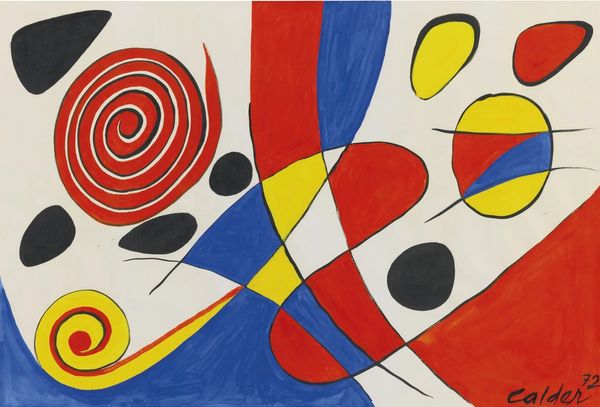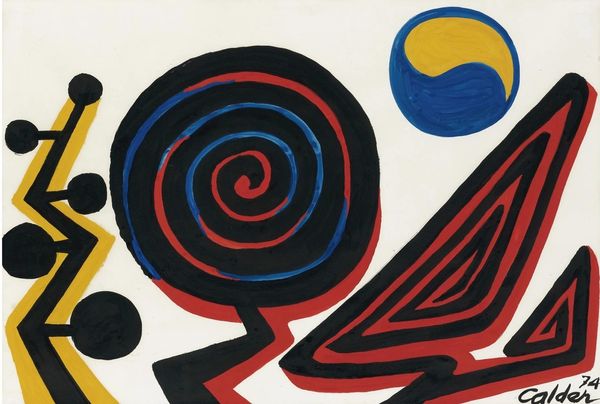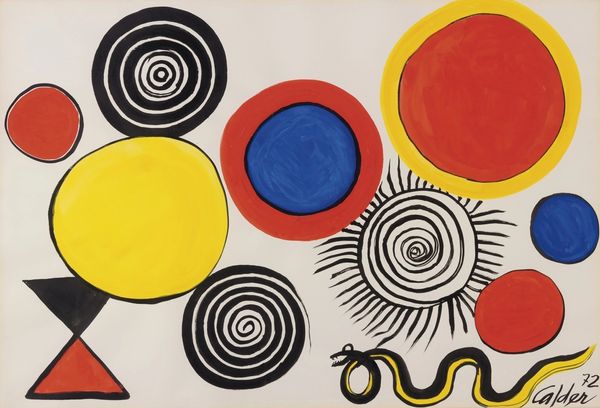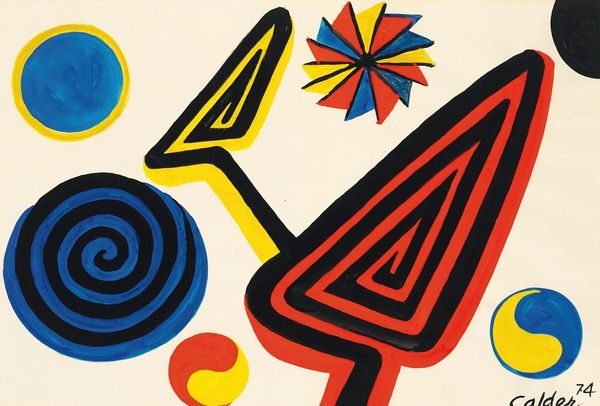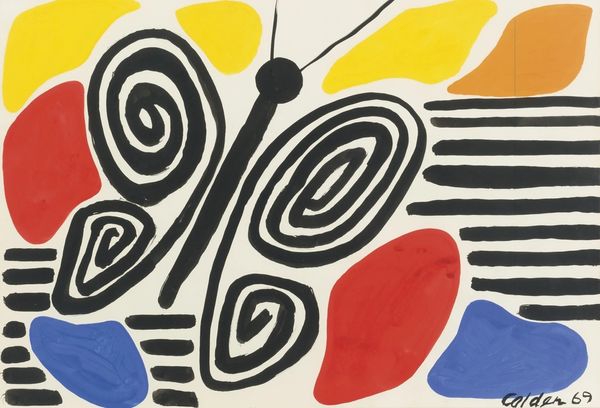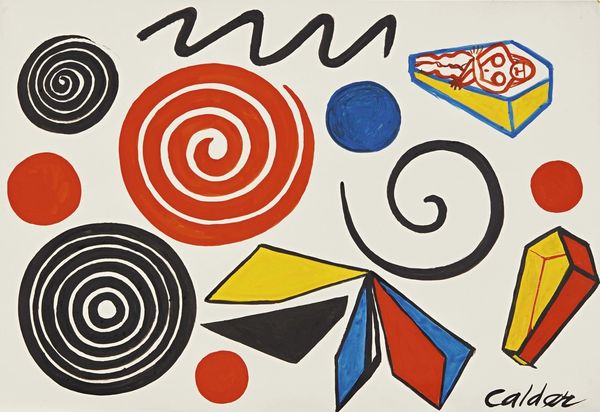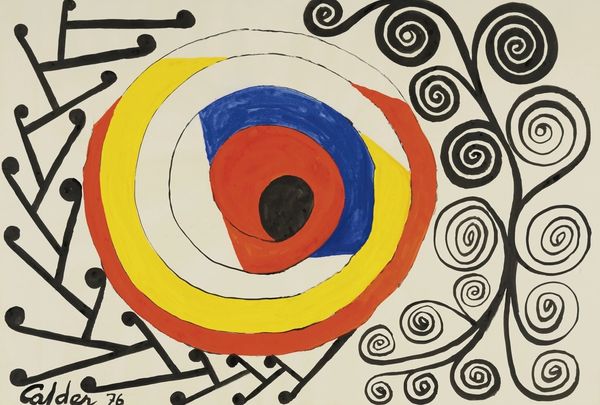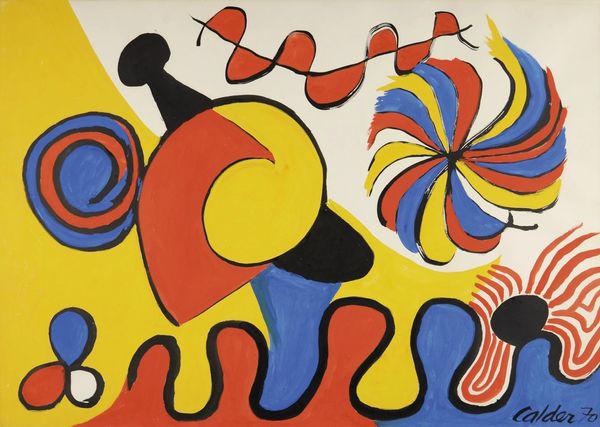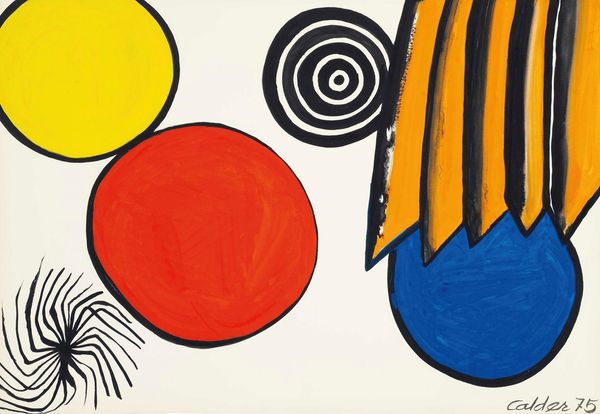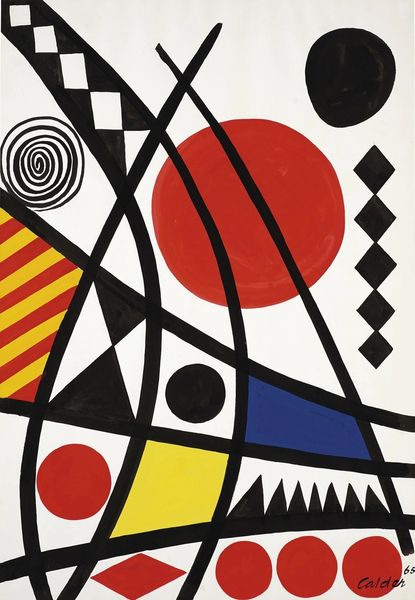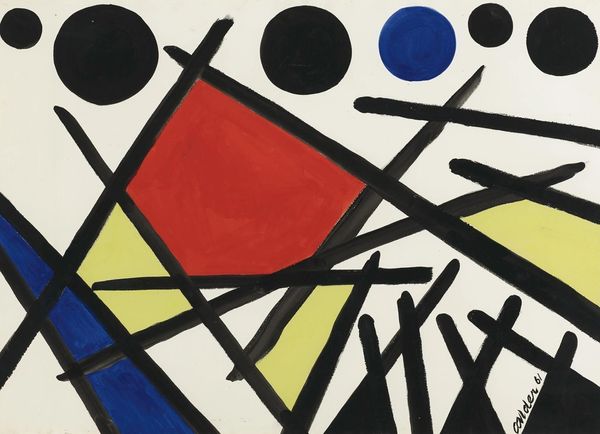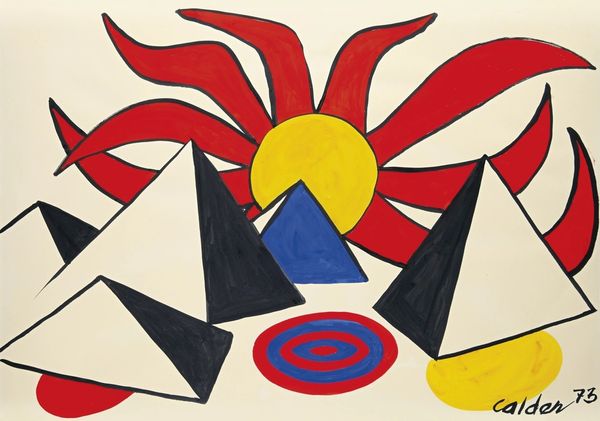
Copyright: Modern Artists: Artvee
Editor: This is "Ba Hia," a 1974 acrylic painting by Alexander Calder. The shapes and colors feel playful and almost childlike. How would you interpret this work? Curator: For me, the critical thing is Calder's shift away from sculpture here. While he's celebrated for his mobiles, this acrylic painting embodies his commitment to material exploration, and how his established language transfers across media. The flatness, the application of acrylic – these speak to the growing influence of mass production techniques within art. Editor: Mass production? But it's a painting! Curator: Exactly! Consider the way the simple forms are rendered; they almost suggest screen printing, don't they? Look at the bold, unmodulated colors, which were readily available, commercially-produced acrylic paints, and their arrangement is divorced from notions of 'skillful' or 'expressive' brushwork. We see a dismantling of traditional art hierarchies, elevating design and accessibility through the celebration of common materials. Editor: So, it's not just about what the painting *is*, but also about *how* it was made and *what* it's made of. Curator: Precisely. Calder, known for his mobiles reflecting industrial aesthetics, extends that exploration through paint. It challenges our idea of a unique ‘art object.’ Consider the social context, 1974—the height of Pop Art's critique of consumerism and Calder subtly participates in the dismantling of this high/low art division. Editor: That’s a really different way of looking at it than I expected. It’s less about what the image represents, and more about what the *materials* represent. Curator: And the context within which that production and material exist. By paying attention to those choices, we get a richer understanding. Editor: I will definitely consider artistic media choices more intentionally going forward.
Comments
No comments
Be the first to comment and join the conversation on the ultimate creative platform.
